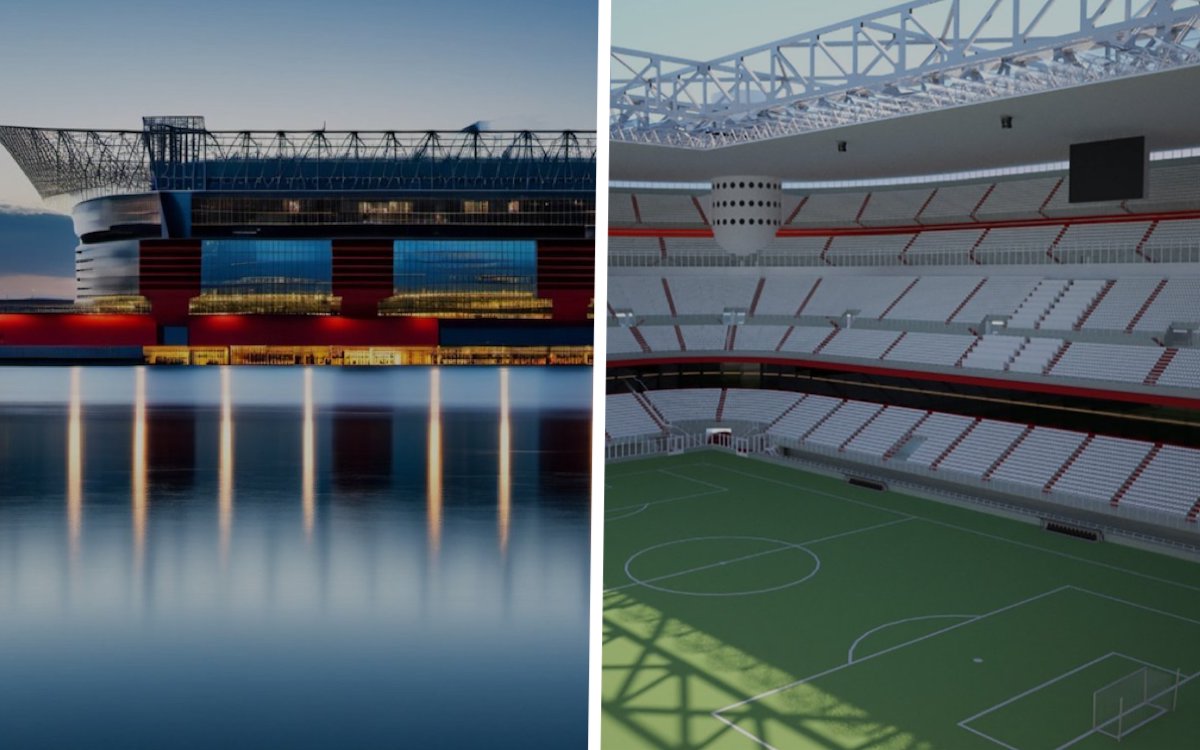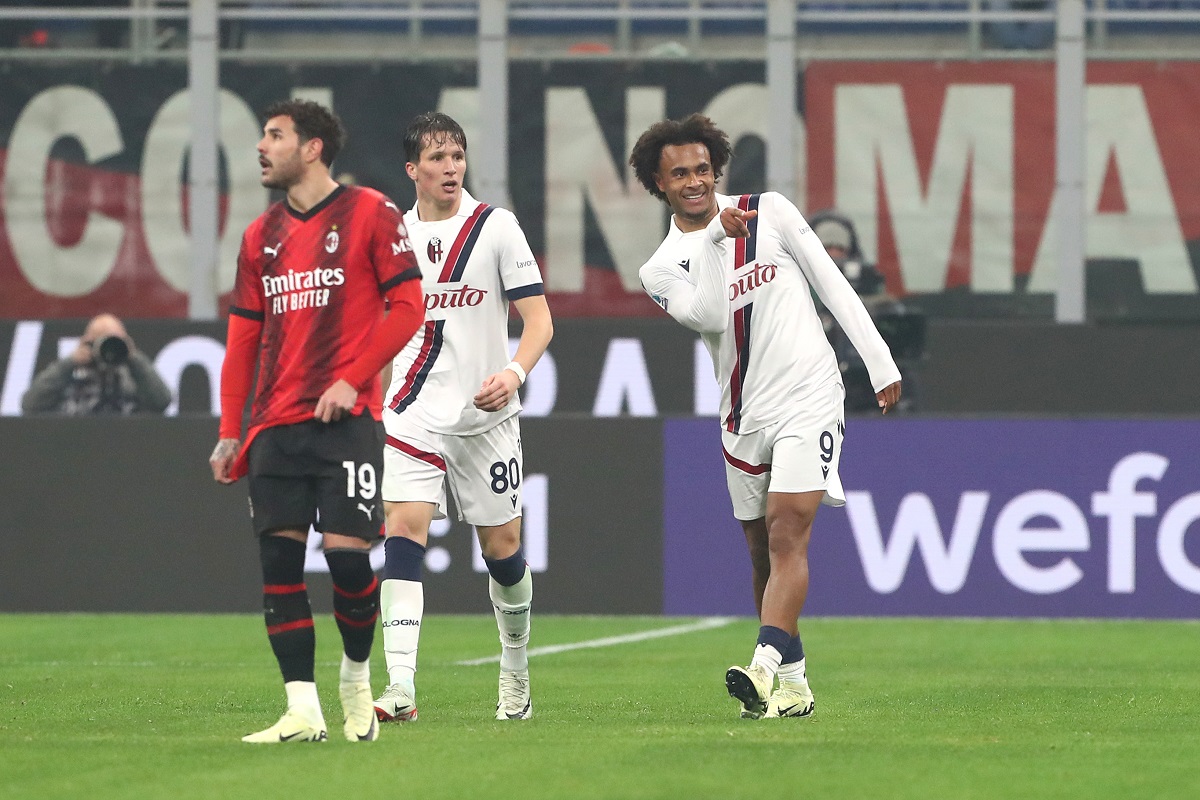The project for the renovation of San Siro was presented today, in what is a bid to keep both AC Milan and Inter at the iconic stadium for a while longer yet.
It is now well known that both Milan and Inter currently intend to move away from the Giuseppe Meazza, with the red half of the city planning to build in San Donato and the blue half towards Rozzano.
In our recent Substack update that there have been developments on the San Donato front, for Milan with the project variant being approved and a timeline now in place for the works.
However, La Repubblica provided a twist as they stated that a ‘save San Siro’ project is planned. The works will cost €300m and would not force the two teams to find a new place to play during.
That project was officially unveiled today, and below is what the City Council presented along with the Arco Associati studio and the architect Fenyves, relayed by MilanNews.
The characteristics
Five key words were used ‘urban, organic, safe, smart, sustainable’, with the explanations being as follows:
➤ The stadium is designed in the middle of a theme park, surrounded and completed by open and welcoming buildings. The surrounding space takes on the characteristics of an urban square capable of offering conditions of full habitability both during events and in the absence of them. The relationship with the neighbourhood and the city is one of morphological and environmental continuity.
➤ The internal functions, primary and ancillary services, are designed in favour of congruity, convenience and efficiency, with a view to organic balance between the parts.
➤ The new stadium must not only be safe but perceived as such, according to international quality standards. The management of flows [of people and traffic], the clarity of communication, the quality of the technological safety systems, the continuous controls and monitoring of the equipment enter into a system logic.
➤ Connectivity, on demand services, communication, purchases: the stadium becomes smart and offers new ways of enjoying the event and any other surrounding event.
➤ Materials, energy, compensation: any event, any action, any design choice must be subordinated to emergency issues linked to the environment, climate and nature.
Capacity and comfort
➤ Smart and virtual Stadium: reaching your seat, ordering services, communicating inside and outside, receiving communications, connecting: the stadium becomes ‘Smart’.
➤ The project involves the replacement of the entire seating park. They will be larger, more comfortable and equipped with ‘Smart’ devices.
➤ The external seating positions will be 70,000, to which 5,000 internal seats will be added.
The fourth tier
➤ There will be new areas for guests, VIPs, common areas, bars, services and meetings.
➤ The project involves the insertion of a new two-storey building which can be used by virtue of the partial demolition of the stands in the first tier.
➤ Along an area of 10,230m² to be multiplied by two, therefore 20,460m², all those services supplementary to the traditional use of events can be arranged and organised.
➤ This fourth tier can be quickly reached from the outside via new stairwells and lifts and would be at the ideal height for the best visibility of the field. Evacuation would be just as quick.
➤ The coherence with the structural pitch of the external spans (which support the second tier) allows full modularity and therefore functional flexibility as well as relative construction ‘ease’.
➤ The stadium will change colour based on the team that will play: it will be red and black when Milan play, but it will be black and blue for Inter.
🏟️ Nuovo San Siro, il piano del Comune da 300M€: quarto anello e 70.000 posti. Ci sarebbe una soluzione anche per far giocare a San Siro #Inter e #Milan durante i lavori. In pratica, ha spiegato Fenyves (architetto di Arco Associati, ndr) parlando del progetto, «demoliamo e… pic.twitter.com/czVa6WYWDw
— SPONDA NERAZZURRA (@spondainter) January 31, 2024
The pitch
In anticipation of a restyling of the stadium, there is obviously the need to consider the impact on the playing surface.
The heating of the pitch, light therapy, controlled light and microclimate, underground ventilation systems, ventilation systems, reinforcement of the playing field, cutting-edge operational agronomic machinery and methodologies, automatic irrigation systems and systems for protecting the playing surface) will all be protected while improving their performance and efficiency.
In the case of light therapy systems, with an investment important (€3-4m), a system similar to the one used in the new Spurs stadium could be introduced.
This is a system that involves the use of lighting fixtures that cover the entire field, providing light to the turf, without using units that trample on the field and therefore allowing light to be provided while leaving free access to ordinary and extraordinary maintenance activities.
The system could mount LED lights integrated with IR (infrared) lights and/or HPS (incandescent) lights. The system could also be fitted with a rain irrigation system integrating the ordinary retractable one.
Other agronomic integrations could be introduced as part of ordinary maintenance to improve the health of the turf, but they did not go into the matter as it is too technical and extensive.
Il Bastione and The Foyer
The new stadium must be equipped with a new external-internal interaction system, which goes in the direction of a greater capacity for ‘osmosis’ more oriented towards reception than mere access control.
Therefore, it will not be so much a prison-style gate as many have called the current San Siro but rather a traversable, bright, transparent, communicative and useable bastion of services for the user.
The project involves the removal of the external gate and the large umbrellas in favour of an integrated architectural system of control activities.
Once past the entrance, the fan would find themselves in a renewed quality space, like a theatrical ‘foyer’, a courtyard space, protected, welcoming and representative.

The acoustic impact
Acoustics is now an important part of buildings intended for public events, and a stadium – in particular the San Siro – requires a series of careful analyses, as it is now located within a very urbanised context, and its use both as football fields and as a structure for summer concerts also causes inconvenience to areas located at a certain distance.
The aim of our acoustic analysis was to verify the current state of noise emission from the stadium to the outside, and to design a series of interventions capable of reducing this emission within the legal limits.
To optimise the renovation proposal, 3D mathematical models were then created with dedicated software for acoustics, which, simulating the behaviour of sound emissions, and taking into account the distances, obstacles, sound-absorbing (or reflecting) capacity of the objects along the path of the signal, are able to precisely determine what the theoretical sound levels will be at the receptors, thus making it possible to verify the compliance of the input signal with respect to the legal parameters currently in force in specific areas.
The use of the stadium as a concert arena was also carefully analysed, which, although limited in the number of events, has always caused a certain discomfort for the residents.
In addition to the passive sound attenuation systems already provided for on the perimeter structures of the stadium, some proposals for intervention on the audio systems will be put forward and containment strategies agreed with the organisers and services in charge of the concerts, in order to find the right compromise between the needs of having an optimal reproduction level without excessively increasing the sound levels at the receptors.
The preliminary data show that it is possible, with the planned interventions, to bring the intake limits at the nearest receptors within the values established by the Law and Council regulations, thus allowing the use of the stadium in all its possible variants in the future.
Project timing
Both for times and costs, the fundamental thing we did was to set up a project WBS/CBS (Work/Cost Breakdown Structure0. In this regard, the project was divided into two macro areas:
Stadium:
1. Grandstand / sky box
2. Roof
3. External ring
Outdoor public area
1. Shopping Center
2. Towers
3. Bridge
These interventions, in addition to affecting different areas, are all separate and independent from each other. This allows you to intervene at different times, both in parallel and sequentially, if necessary.
The interventions on the stadium, limited and distributed in different areas, can proceed allowing the teams to continue to use the structure safely.
To manage the renovation works of the stadium, it was decided to plan the construction phases to minimise the impact on the areas used during the matches.
It is planned to set up interventions on completed sections, started and concluded in a short, defined and limited time. The start of work will focus on sections distant from the playing field, intensifying operations during breaks between seasons or during team travel.
The urban project
The area will be surrounded by large tree-lined bands that frame the new urban parks and expanded gardens, acting as ‘buffers’ with respect to the neighbouring neighbourhoods, isolating it, protecting it and recovering contact with the surrounding soil.
The entrance to the commercial and service area will take place with clearly distinct methods and spaces between pedestrian paths, rest areas and operating functions (loading/unloading).
The public areas must have controlled mobility where only the transit of workers and emergency vehicles will be permitted and zone 30 will be established.
The first prerequisite of the proposed urban and architectural redevelopment is therefore to:
➤ Create a new large public space along the edge of via Tesio, connecting the neighbourhoods, characterised by a real equipped park;
➤ Create a new integrated system of buildings for multiple uses, overlooking the new space called Piazza dei Tifosi, in a north-south direction, along the west side of the San Siro, developing its potential as a true ‘urban square’;
➤ Encourage the establishment of tertiary, service and commercial spaces and activities capable of qualifying the area as a sort of real new ‘landmark’.
The placement of the various hypothesised functions within the area according to a dual principle: of concentration, placing them near the stadium, and of stratification, organising them in the surrounding spaces in a north-south direction.
The resulting result is that of a complex system of building organisms capable of freeing up park and green areas equipped for sports, facing the residential neighbourhoods while creating a new public space with a strong identity towards the San Siro.
Conclusion
There is a lot to take in from the pitch, but to break it down as simply as possible it is clear that the Council are not just committed to fixing the issues with the current San Siro but developing it into a better stadium and surrounding area.
Whether the clubs will respond to the project in a positive way remains to be seen, especially given the doubts over what it would mean for revenues (with new homes they would keep 100%), but it is certainly something to ponder.








At this point the council has no credibility left. Milan will be better off without these bums
And who gets to claim the revenue from ticket sales, concessions, and hosting other events. This is why Serie A is light years behind European competition that allows for teams to own their stadiums (see Juventus) and benefit from the additional revenue for hosting non-Serie A events at their venue.
AC Milan need this with current ownership and conservative spending model if they are going to compete with the likes of Juventus and Inter moving forward.
100%, it’s a lovely idea in theory but this benefits the local Authorities. The issue is less the stadium which is resolvable it’s the revenue stream. Like you said Serie A needs to wake up out of its slumber. The nation of the renaissance, with some of the most beautiful cities on earth, and the most stylish nation on earth, the home of prada, Ferrari, Armani and Ducati SHOULD be the most marketable league on the planet.
I adore San Siro it’s the most iconic stadium on the planet which is why I supported the Cathedral design as it kind of echoes it, but we must get our own revenue
Sure. If Milan don’t need to pay a dime, then go for it. And meanwhile still continue with the San Donato project and move there once it’s done. 😀
Bottom line is, renovation still means municipality owned stadium and lower revenues. So, no, Thank You?
I think it is hilarious how they use the words organic, sustainable and smart. They took every fashionable catchphrase.
Maybe it will be called iStadium also.
And of course they will be desperate to keep their tenants.
Both Inter and Milan need to own their stadiums. Stadiums are not merely places where football is played anymore, but complexes that bring various streams of revenue.
Milan need its own stadium, we need the revenue and the freedom that comes with it.
They can ha e it now, a bit too late. They had the chance to approve and go ahead with the proposed project that should ha e been under construction by now.
Develop this into something else now
Both teams obviously will still want to build their own to maximise revenue. I hate inter but i wouldnt say no to milan and inter just buying the san siro from the council.. Could be a cheaper option for both clubs than building new. Share on the refurb costs. Its quite funny the last time it was refurbished was when italy hosted the world cup.
This is medicine after death, the world is evolving and no one wants to be left bhind. pls keep the san siro and let the milan clubs move forward with their various projects if they want italian clubs to compete with prem clubs period.
Medicine after death indeed. After all the work and investments Milan have put into the San Donato and now this proposal? It should have happened before Milan even started anything on their own. Too little too late bums.
i think this is horrible
In the US cities pay professional teams for part or the entirety of new stadiums, and the teams get 100% of the revenues (taxes aside). Sometimes the cities will say tax payers have no business subsidizing billionaires – but top teams will find a city mear or far that will meet their financial needs.If the revenue is all Milan and Inter’s and Milano wins by keeping the teams inside – then great. Otherwise, to the burbs it is.
Sad that a great solution like this is being trapped by politicians and their councils who want the revenue to go straight into their pockets- rather than understanding that the general puplic and city of Milan lucrates indirectly from having two strong historical clubs operating in the heart of the city out of one of the most epic arenas in world.
I would wish for a the to council finally sell San Siro to Milan and Inter. If these two clubs where to leave San Siro, the stadium will become a sad ruin that the council cant afford to maintain. Who else will be able to fill up the place?
It would be another Rome Colosseum
I would be happy with this if the clubs managed to ownthe stadium because real,barca and others all play in ancient but renoavtediconic stadiums but own them and do well
This likely will end up with several bureocratic delays, cost overruns, and take likely longer then what milan plans to so privetly witha. New stadium. Plus at the end of the day, the deal of “renting” a stadium robs milan of millions a year!
4th tier? Lol
Even some part of the 3rd tier is already closed due to vibration issue.
Now way all that can be done with mere 300m. Garbage proposal.